Odds ratio is similar to relative risk In the sheepskin trial the relative risk was 058 and the odds ratio was 054 For most clinical trials where the event rate is low, that is less than 10% of all participants have an event, the odds ratio and relative risk can be considered interchangeableThe odds ratio for lettuce was calculated to be 112 How would you interpret the odds ratio? The basic difference is that the odds ratio is a ratio of two odds (yep, it's that obvious) whereas the relative risk is a ratio of two probabilities (The relative risk is also called the risk ratio) Let's look at an example Relative Risk/Risk Ratio Suppose you have a school that wants to test out a new tutoring program
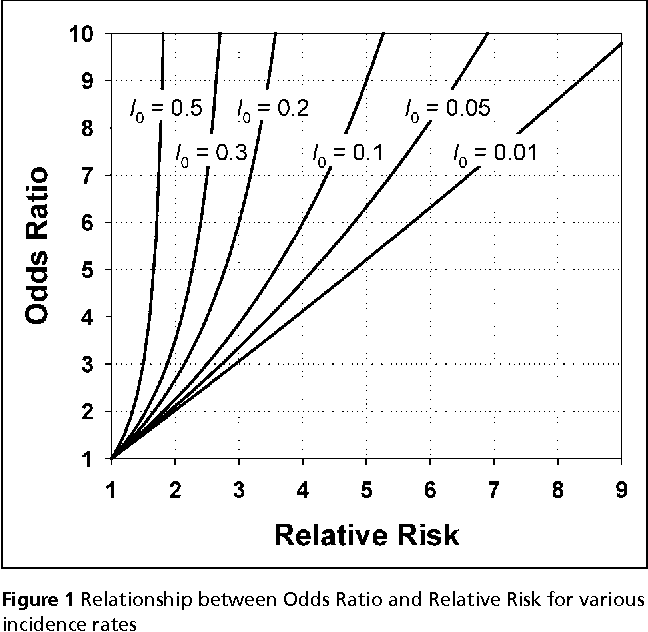
Pdf When To Use The Odds Ratio Or The Relative Risk Semantic Scholar
Which is better odds ratio or relative risk
Which is better odds ratio or relative risk-Odds ratio and relative riskDifferenz zwischen Odds Ratio und Relatives Risiko Differenz zwischen 21 Odds Ratio vs Relatives Risiko Das relative Risiko (RR) ist einfach die Wahrscheinlichkeit oder Beziehung zweier Ereignisse Nehmen wir an, A ist Ereignis 1 und B ist Ereignis 2 Man kann das RR erhalten, indem man B von A oder A / B dividiert
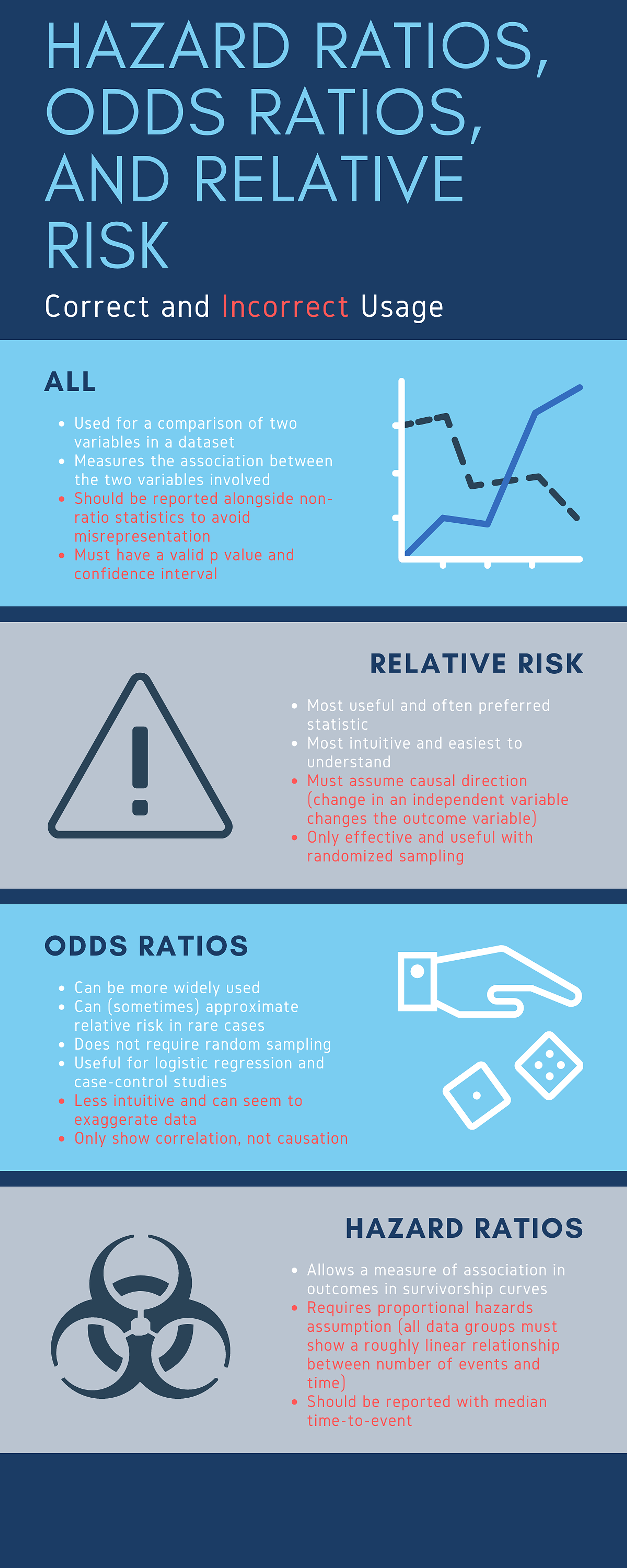



Cureus What S The Risk Differentiating Risk Ratios Odds Ratios And Hazard Ratios
The relative risk is the ratio of the risk in the exposed group to the risk in the unexposed group, as is summarized in Box 1 Depending on the study design and statistical method applied, the relative risk can be presented using different measures of effect, such as the incidence rate ratio and hazard ratioAn odds ratio of 112 means the odds of having eaten lettuce were 11 times higher among casepatients than controls Because the odds ratio is greater than 10, lettuce might be a risk factor for illness after the luncheon The magnitude of the odds ratioIn a cohort study, particularly on the occasion of a logistic regression, we replace the relative risk by the odds ratio if the disease is rare (incidence less than 10%)
The quote surely just means to say that the odds ratio is a relative risk measure rather than an estimate of the relative risk, which as already point out is only approximately the case in cohort studies/randomized trials for very low proportions By relative risk measure I mean something that is given relative to some comparison group in a way that the absolute difference depends on the Relative risks and odds ratios are widely reported in the medical literature, but can be very difficult to understand We sought to further clarify these important indices Methods We illustrated both relative risks and odds ratios using bar charts, then looked at the types of study for which each statistic is suitedAbstract Odds ratios (OR) are commonly reported in the medical literature as the measure of association between exposure and outcome However, it is relative risk that people more intuitively understand as a measure of association Relative risk can be directly determined in a cohort study by calculating a risk ratio (RR)
Both the odds ratio and the relative risk compare the relative likelihood of an event occurring between two groups The relative risk is easier to interpret and is consistent with general intuition Some designs, however, allow only for the calculation of the odds ration Covariate adjustment is easier for an odds ratioPute either the odds ratio or the relative risk to answer this question The odds ratio compares the relative odds of death in each group For women, the odds were exactly 2 to 1 against dying (154/308 05) For men, the odds were almost 5 to 1 in favor of death (709/142 4993) The odds ratio is 9986 (4993/05) There is a 10fold greaterFor more common outcomes, the odds ratio always overstates the relative risk, sometimes dramatically
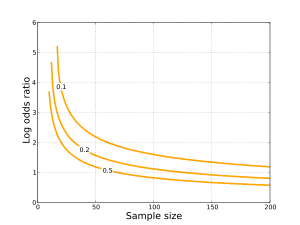



Odds Ratio Wikipedia
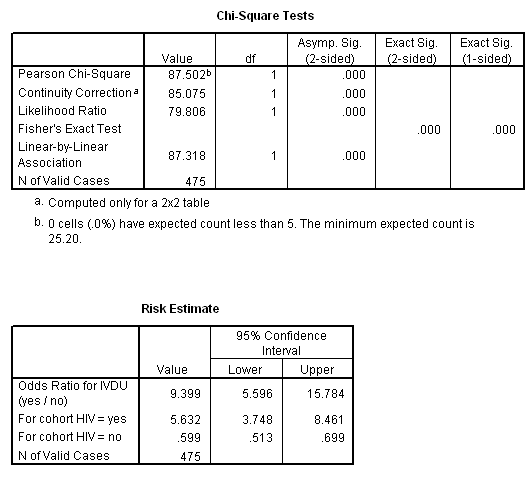



Marg Innovera
A risk ratio of 10 indicates identical risk among the two groups A risk ratio greater than 10 indicates an increased risk for the group in the numerator, usually the exposed group A risk ratio less than 10 indicates a decreased risk for the exposed group, indicating that perhaps exposure actually protects against disease occurrence When the outcome of interest is relatively rare ( Odds ratio vs risk ratio You know the difference between risk and odds A risk is the proportion of subjects with an event in a total group of susceptible subjects Thus, we can calculate the risk of having a heart attack among smokers (infarcted smokers divided by the total number of smokers) and among nonsmokers (the same, but with non



College Statistics Sas Interpretation Relative Risk Odds Ratio Homeworkhelp




When Can Odds Ratios Mislead The Bmj
You may have noticed that the odds ratio and relative risk are very similar in this case This happens when the proportions being compared are both close to 0 Which one you decide to use is a matter of personal preference and perhaps your audience Question 23 from the second paper of 08 asked the candidates to define effect size Effect size is a quantitative reflection of the magnitude of a phenomenon; The odds ratio will be greater than the relative risk if the relative risk is greater than one and less than the relative risk otherwise In the example above, if the adjusted odds ratio were interpreted as a relative risk, it would suggest that the risk of antibiotic associated diarrhoea is reduced by 75% for the intervention relative to the placebo group




Bi Practice Page 4 A Journey Of A Thousand Miles Begins With The First Step




Relative Risk Or Odds Ratio For Cardiovascular Disease Incidence Download Scientific Diagram
Odds ratio = (A*D) / (B*C) The relative risk tells us the ratio of the probability of an event occurring in a treatment group to the probability of an event occurring in a control group It is calculated as Relative risk = A/ (AB) / C/ (CD) In short, here's the difference An odds ratio is a ratio of two odds Risk Ratio For the study examining wound infections after incidental appendectomy, the risk of wound infection in each exposure group is estimated from the cumulative incidence The relative risk (or risk ratio) is an intuitive way to compare the risks for the two groupsThe odds ratio ((a/c)/(b/d)) looks at the likelihood of an outcome in relation to a characteristic factor In epidemiological terms, the odds ratio is used as a point estimate of the relative risk in retrospective studies Odds ratio is the key statistic for most casecontrol studies



Relative Risk Ratio Vs Odd Ratio Ppt Authorstream




Odds Ratios And Risk Ratios Youtube
Odds ratio (OR) and risk ratio (RR) are two commonly used measures of association reported in research studies In crosssectional studies, the odds ratio is also referred to as the prevalence odds ratio (POR) when prevalent cases are included, and, instead of the RR, the prevalence ratio (PR) is calculatedIn a control group The odds ratio (OR) is the odds of an event in an experimental group relative to that in a control group An RR or OR of 100 indicates that the risk is comparable in the two groups A value greater than 100 indicates increased risk;The risk ratio In practice, risks and odds for a single group are not nearly as interesting as a comparison of risks and odds between two groups For risk you can make these comparisons by dividing the risk for one group (usually the group exposed to the risk factor) by the risk for the second, nonexposed, group This gives us the risk ratio




Relative Risk Wikipedia



Research Statistics Basics Contents 1 Basic Concepts 2 References Basic Concepts Null Hypothesis The Hypothesis That The Independent Variable Has No Effect On The Dependent Variable For Example Steroids Do Not Improve Outcomes In Ards Would Be
For example, the magnitude of the positive effects of a drug on the study population Measures of effect size include absolute risk, relative risk, odds ratio and numbers needed to treat (NNT)In practice the odds ratio is commonly used for casecontrol studies, as the relative risk cannot be estimated In fact, the odds ratio has much more common use in statistics, since logistic regression, often associated with clinical trials, works with the log of the odds ratio, not relative risk The odds ratio (OR) is the ratio of the odds of cancer in smokers to the odds of cancer in nonsmokers OR = (a/b)/ (c/d) = (ad)/ (bc) The risk ratio (RR), also called the relative risk, is the ratio of the probability of cancer in smokers to the probability of cancer in nonsmokers Given that you know a, b, c, and d, you can compute either of



1




Odds Ratios Versus Relative Risk
Another measure we can find is odds Odds Odds is a ratio of the number of RELATIVE RISK AND ODDS RATIO Risk and Odds just seemed the same to me for a long time Since then, I have come to understand to important difference Lets start with Relative Risk Relative Risk can be addressed by asking the following question How many times more likely is an "exposed" group to develop a The relative risk is a measure of the strength of the effect of the drug treatment Another such measure is the odds ratio, which is the ratio of the odds in favor of a headache for the treatment group to the odds in favor of a headache for the control (or placebo) group found by evaluating psubt over 1 minus psubt all over psubc over 1




Odds Ratio Relative Risk Calculation Definition Probability Odds Youtube




Measuring Of Risk
In both cases the relative risk was 5, but with entirely different levels of impact Please note this example is not meant to be interpreted that taking care of your health is not important!!!Odds Ratio, Relative Risk, and Risk Difference How to Use Odds Ratio, Relative Risk, and Risk Difference to Describe the Association Between Two CategoricalRelative Risk and Odds Ratio for the obese 3) Overall, you can see that decreasing the baseline incidence will decrease the odds ratio (300 in those who are nonobese versus 129 in those who are obese) Obviously, these results run counter to expected results, putting the onus on the researcher to justify them Similarly, you should find




Figure 2 X 2 Table With Statpearls Ncbi Bookshelf




Reporting The Results Sage Research Methods
A crude odds ratio can be converted to a crude risk ratio risk ratio = odds ratio/(1 − p0) (p0 × odds ratio), in which p0 is the outcome prevalence (risk) among the unexposed Some have applied this formula to an adjusted odds ratio to obtain an adjusted risk ratio 49 This method can produce biased risk ratios and incorrect confidenceA value lower than 100 indicates decreased risk The 95% confidence intervals and statisticalWhen the disease is rare, the odds ratio will be a very good approximation of the relative risk The more common the disease, the larger is the gap between odds ratio and relative risk In our example above, p wine and p no_wine were 0009 and 0012 respectively, so the odds ratio was a good approximation of the relative risk OR = 0752 and RR = 075
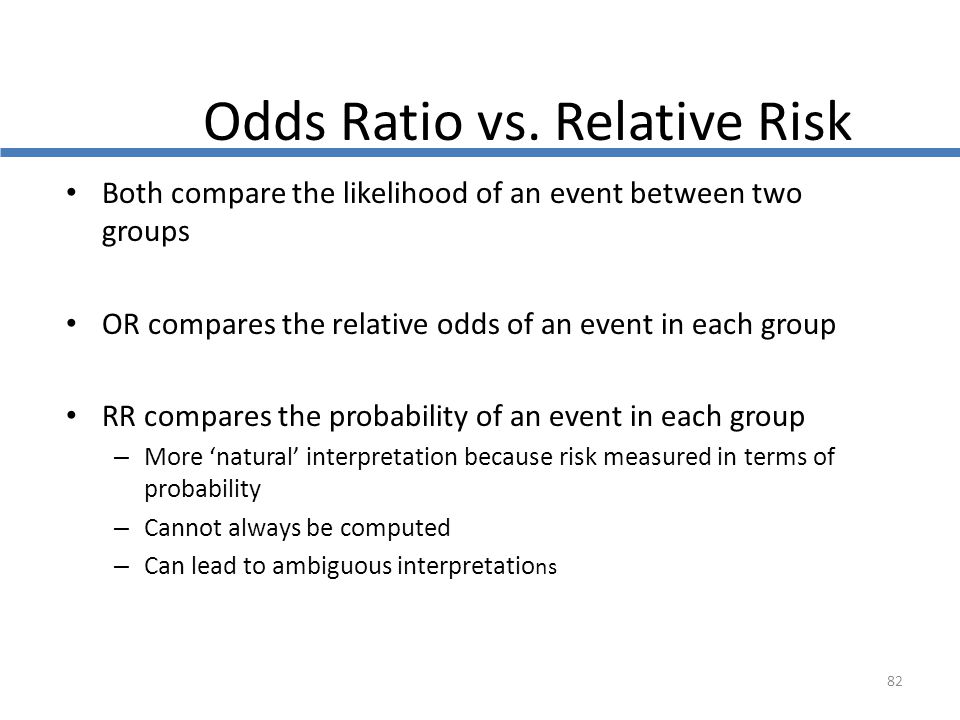



Cph Exam Review Epidemiology Ppt Download




Relative Risk And Odds Ratio
The risk ratio (or relative risk) is the ratio of the risk of an event in the two groups, whereas the odds ratio is the ratio of the odds of an event (see Box 92a ) For both measures a value of 1 indicates that the estimated effects are the same for both interventions Neither the risk ratio nor the odds ratio can be calculated for a studyOdds Ratio (OR) is a ratio or proportion of odds I just remember that odds ratio is a ratio of odds and probability isn't a ratio of odds (AKA it is the other option) Relative Risk = Probability / Probability Odds Ratio = Odds / Odds Now that you have a general idea of what odds ratio and relative risk are you need to know when to use Odds ratios While risk reports the number of events of interest in relation to the total number of trials, odds report the number of events of interest in relation to the number of events not of interest Stated differently, it reports the number of events to nonevents




Definition And Calculation Of Odds Ratio Relative Risk Stomp On Step1



Population Perspective Made Easy On Vimeo
The relative risk is best estimated using a population sample, but if the rare disease assumption holds, the odds ratio is a good approximation to the relative risk — the odds is p / (1 − p), so when p moves towards zero, 1 − p moves towards 1, meaning that the odds approaches the risk, and the odds ratio approaches the relative riskSometimes, we see the log odds ratio instead of the odds ratio The log OR comparing women to men is log(144) = 036 The log OR comparing men to women is log(069) = 036 log OR > 0 increased risk log OR = 0 no difference in risk log OR < 0 decreased risk Odds Ratio 0 5 10 15 More on the Odds Ratio Log Odds Ratio4 2 0 2 4For instance, a relative risk of 70% corresponds to an odds ratio of 07/(107)=233 however, it is clearer to say to the layman that a certain risk factor "increases the probability of a disease by 70%" (relative risk) rather than that it "increases the probability of the disease by an odds ratio




Relative Risk Http Www Slideshare Net Terryshaneyfelt7 What Does An Odds Ratio Or Relative Risk Mean Study Skills Statistics Math Research Methods




Pdf When To Use The Odds Ratio Or The Relative Risk
The relative risk (also known as risk ratio RR) is the ratio of risk of an event in one group (eg, exposed group) versus the risk of the event in the other group (eg, nonexposed group) The odds ratio (OR) is the ratio of odds of an event in one group versus the odds of the event in the other RELATIVE RISK AND ODDS RATIO An RR (or OR) more than 10 indicates an increase in risk (or odds) among the exposed compared to the unexposed, whereas a RR (or OR) Even with initial risks as high as 50% and very large reductions in this risk (odds ratios of about 01), the odds ratio is only 50% smaller than the relative risk (01 for the odds ratio compared with a true value for the relative risk of 02)




Cureus What S The Risk Differentiating Risk Ratios Odds Ratios And Hazard Ratios




Measures Of Association Stats Medbullets Step 1
Risk ratio = 005/008 = 0625 Odds ratio = 0053/0087 = 0609 So we can say that the treatment reduces the risk of the outcome to 625% of what it would otherwise have been The odds of the outcome would have been reduced to 609%Portantly, we see that the odds ratio is close to the relative risk if probabilities of the outcome are small (Davies et al, 1998) And it is this fact that enables us, most of the time, to approximate the relative risk with the odds ratio Table 5 below illustrates the relationship between RR and OR for some probabilities of the outcome




How To Calculate Odds Ratio And Relative Risk In Excel Statology




Pdf Odds Ratio Or Relative Risk For Cross Sectional Data Semantic Scholar




Relative Risk Odds Ratios Youtube




Probability Odds Ratio And Relative Risk Gpraj



Silo Tips Download Transcript Measuring Risk In Epidemiology B D A C Measuring Risk In Epidemiology
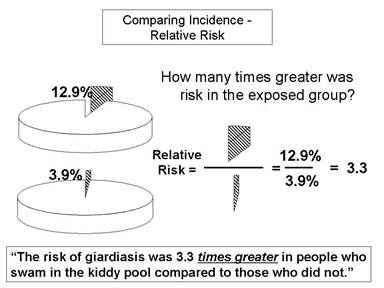



Relative Risk And Absolute Risk Definition And Examples Statistics How To



Risk Differences Odds Ratios And Relative Risks Plots With Proc Freq



6 7 8 9 10 11 12 13 14 15 16 17 18 19 21 22 23 24 25 26 27 28 29 30 Review Incidence And Prevalence Are Formally Defined On Slide 7 Birth And Death Rates Are Also Estimates Of Absolute Risk Risk Factors Are Identified By Determining
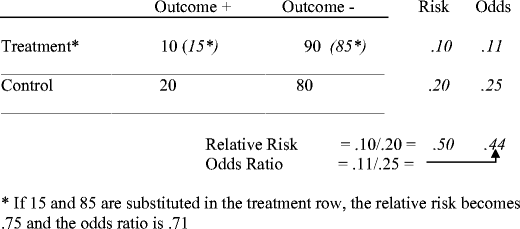



Tips For Teachers Of Evidence Based Medicine Understanding Odds Ratios And Their Relationship To Risk Ratios Springerlink




What Is An Odds Ratio And How Do I Interpret It Critical Appraisal




1 Relative Risks Odds Ratios Or Hazard Ratios Of Risk Factors For Download Table



Definition And Calculation Of Odds Ratio Relative Risk Stomp On Step1




Converting An Odds Ratio To A Range Of Plausible Relative Risks For Better Communication Of Research Findings The Bmj
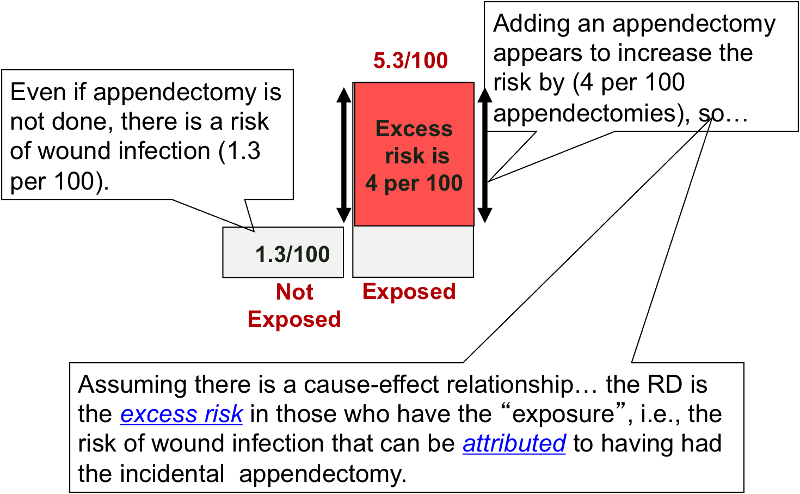



Measures Of Association




Wasp Write A Scientific Paper Using Excel 12 Odds Ratio And Relative Risk Sciencedirect




1 The Odds Ratio Relative Odds In A Case Control Study We Do Not Know The Incidence In The Exposed Population Or The Incidence In The Nonexposed Population Ppt Download
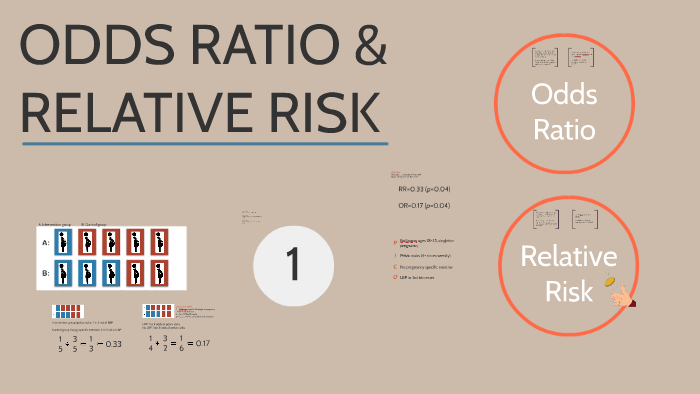



Odds Ratio Relative Risk By Susi Delaney




Math Formula To Reproduce A Plot Comparing Relative Risk To Odds Ratios Cross Validated




Measures Of Effect Relative Risks Odds Ratios Risk Difference And Number Needed To Treat Kidney International




Or2rr




Relative Risk Versus Odds Ratio Usmle Biostatistics 4 Youtube



Risk Ratio




Odds Ratio Hazard Ratio And Relative Ratio Hazard Ratio And Relative Risk 63 Table 5 Examples Of Rr And Or For Different Probabilities ˇ 1 ˇ 2 Rr Or 4 1 4 6 2 3 67 58 04 Pdf Document




Statistics Part 13 Measuring Association Between Categorical Data Relative Risk Odds Ratio Attributable Risk Logistic Regression Data Lab Bangladesh
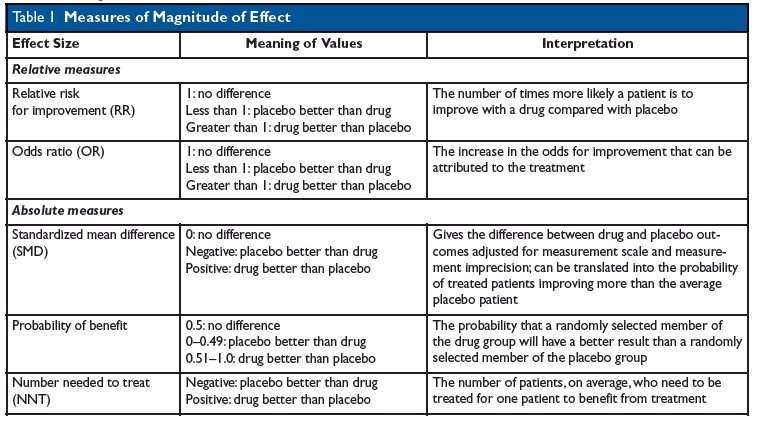



Kevin Whelan If You Re Struggling With Odds Ratios Relative Risks Standardised Mean Differences And Number Needed To Treat And The Associated Alphabet Soup Or Rr Smd Nnt Then This Paper




Literature Search




Pdf When To Use The Odds Ratio Or The Relative Risk Semantic Scholar




Math Formula To Reproduce A Plot Comparing Relative Risk To Odds Ratios Cross Validated




The Difference Between Relative Risk And Odds Ratios The Analysis Factor




Lecture 5 Between Group Inferences Iii Analysis Of Frequencies Categorized Data Flashcards Quizlet




Research Techniques Made Simple Interpreting Measures Of Association In Clinical Research Sciencedirect




How To Be Awesome At Biostatistics And Literature Evaluation Part Ii Tl Dr Pharmacy



Absolute Risk Vs Relative Risk Vs Odds Ratio Pp Made Easy On Vimeo



Epidemiology Stepwards



Relative Risk Ratios And Odds Ratios
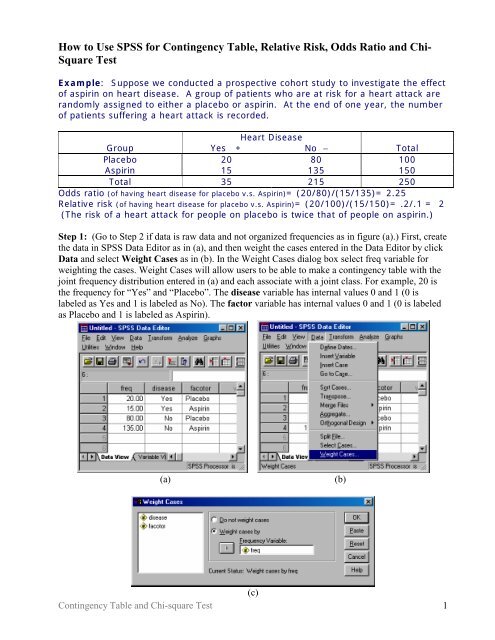



How To Use Spss For Contingency Table Relative Risk Odds Ratio




Relative Risk And Odds Ratio Usmle The Journey



Hazard




Calculation Of Relative Risks Rr And Odd Ratios Or Download Table




Confidence Interval For Relative Risk Ppt Video Online Download



Diminishing Odds Ratios Published In Pubmed Health Geomatics Lab
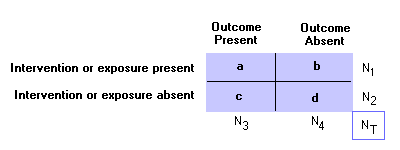



Epidemiology Glossary Physical Diagnosis Skills University Of Washington School Of Medicine




Categorical Data Ziad Taib Biostatistics Astra Zeneca February
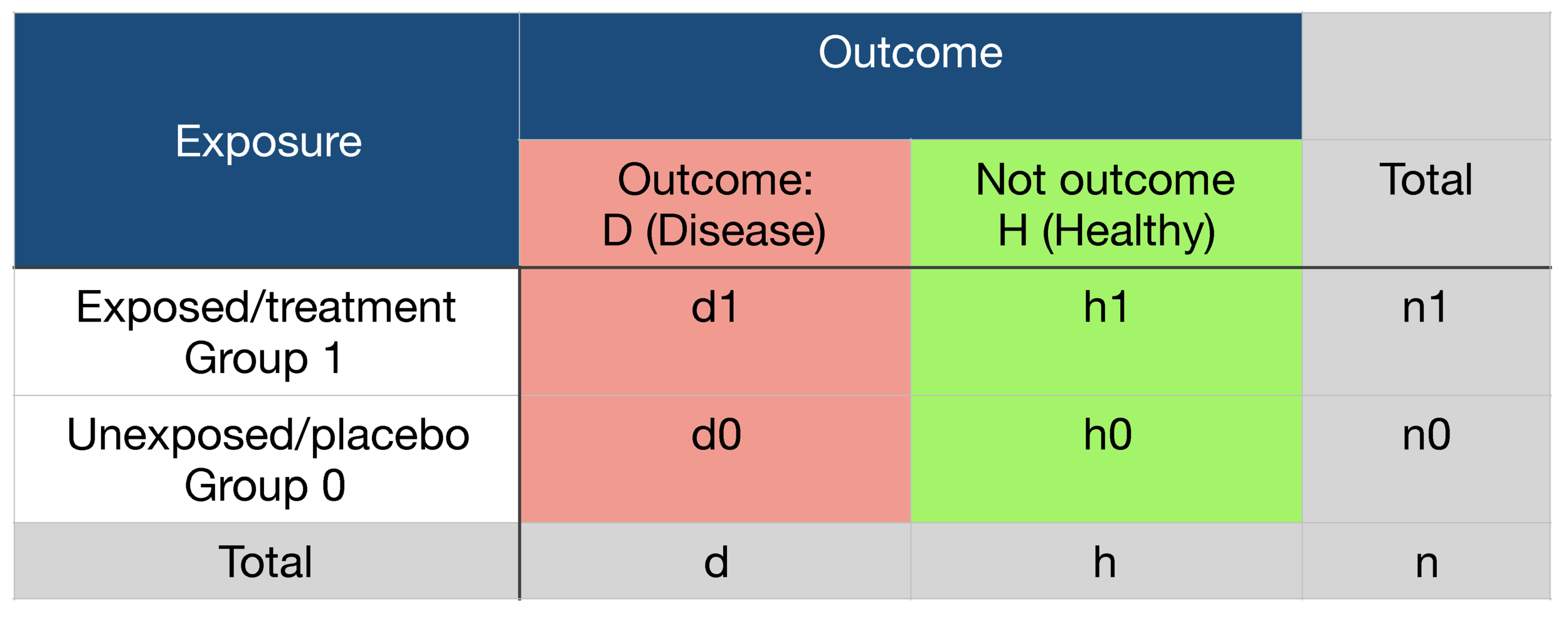



Probability Odds Ratio And Relative Risk Gpraj




How To Calculate Odds Ratio And Relative Risk In Excel Statology




Definition And Calculation Of Odds Ratio Relative Risk Stomp On Step1




Il Estimating Odds Ratios And Relative Risks An Chegg Com
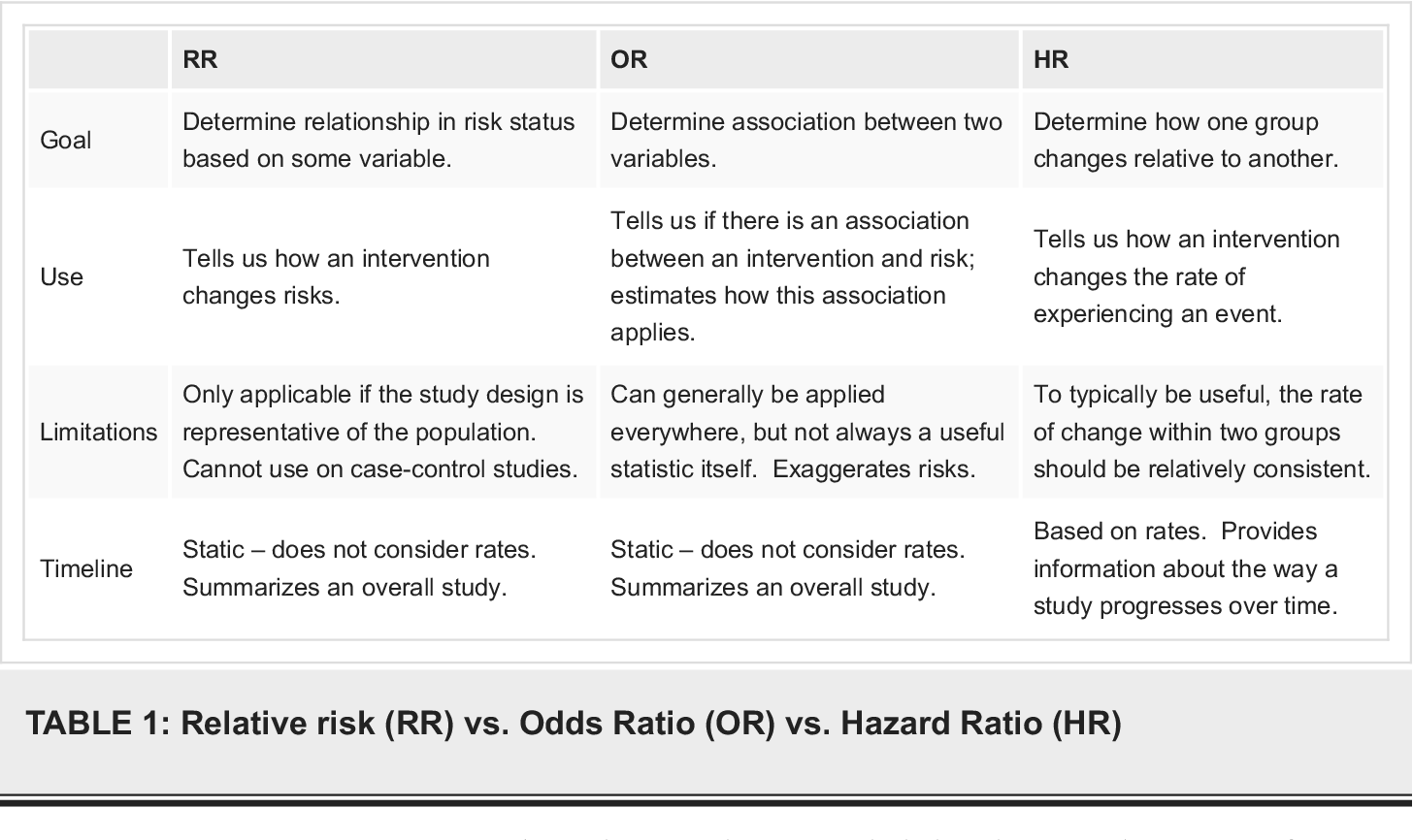



Pdf What S The Risk Differentiating Risk Ratios Odds Ratios And Hazard Ratios Semantic Scholar
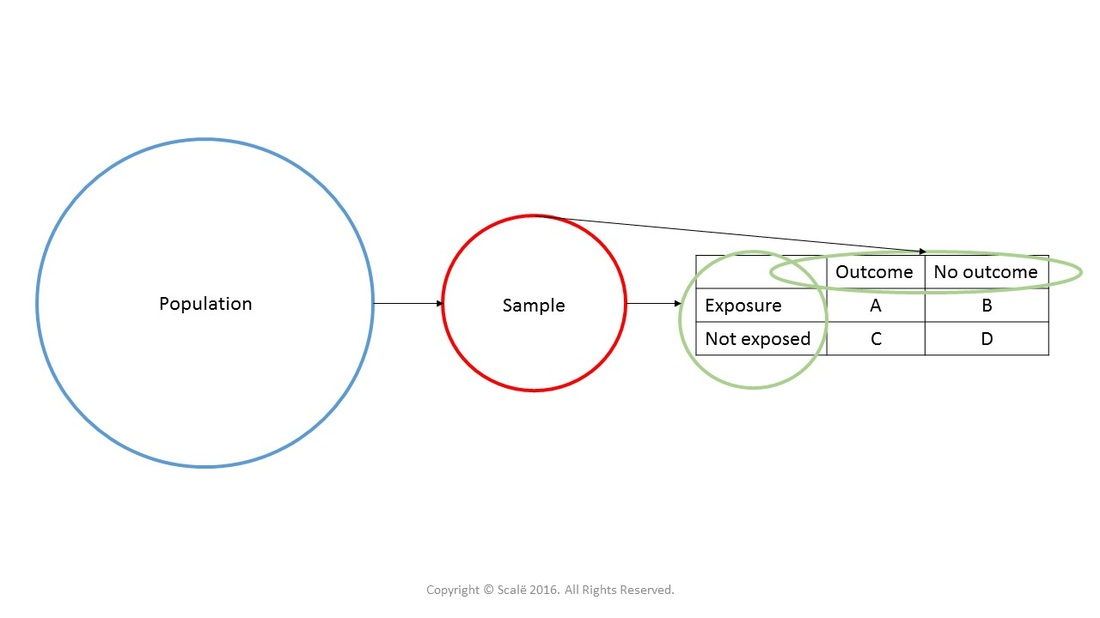



Calculate Relative Risk With 95 Confidence Intervals




How To Interpret And Use A Relative Risk And An Odds Ratio Youtube



Requesting Effect Measures
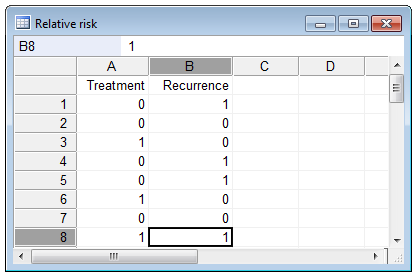



Relative Risk Odds Ratio
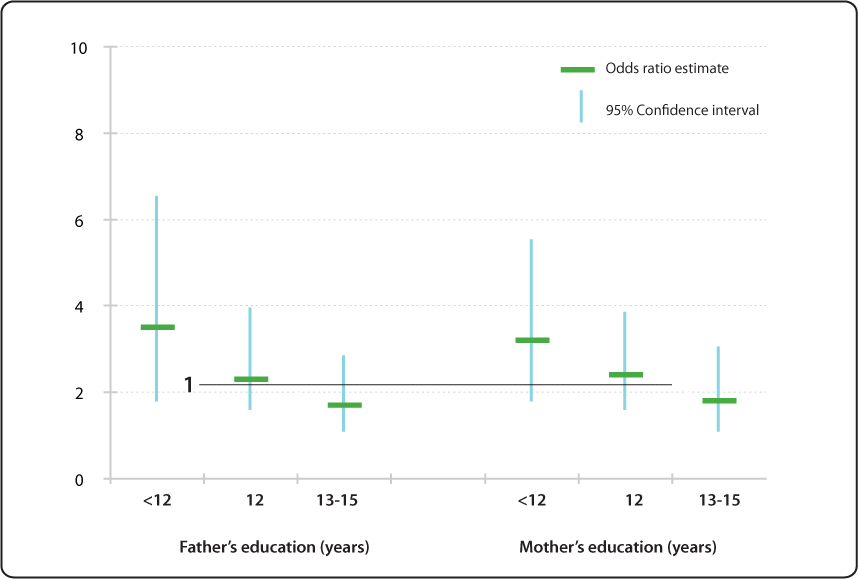



Relative Risk Odds Ratio Estimate With 95 Confidence Intervals Of Children Having Specific Language Impairment Sli By Parent S Level Of Education Reference College Graduate Or More Education 16 Years Nidcd




Calculation Of Odds Ratios Or And Relative Risk Rr Derived From Download Scientific Diagram




Glossary Of Research Terminology
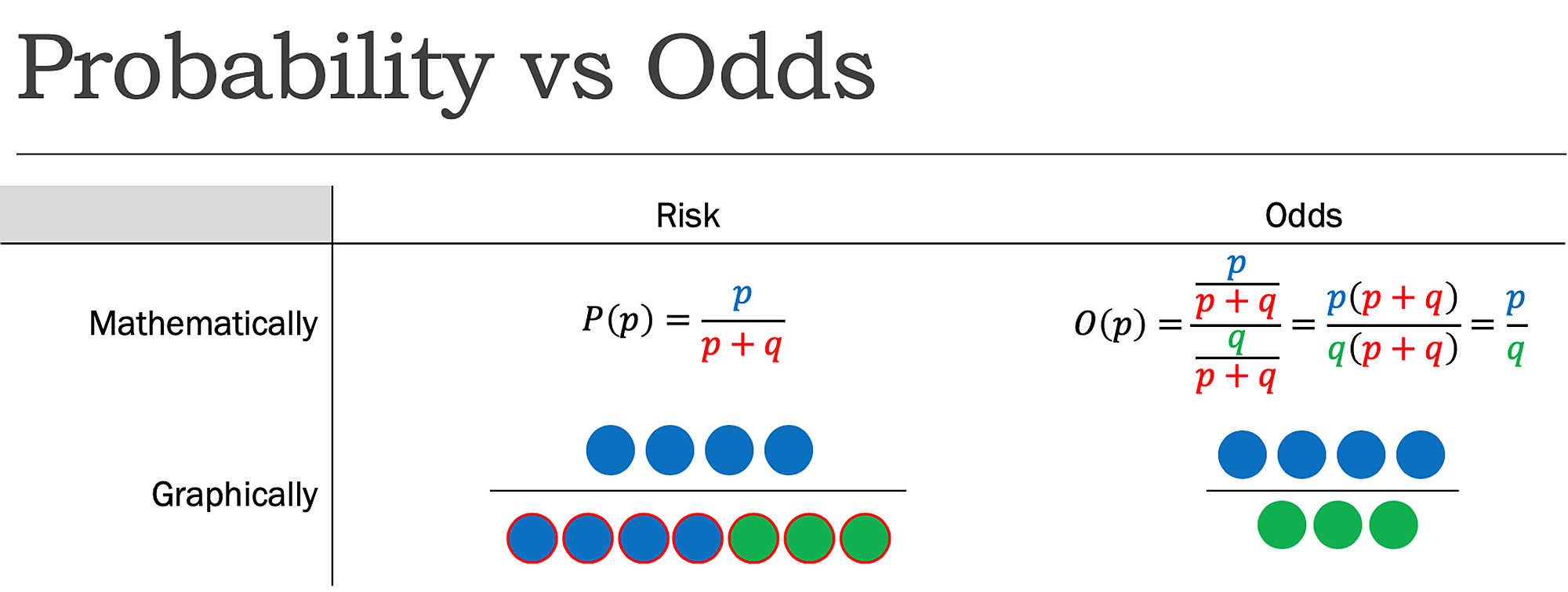



Cureus What S The Risk Differentiating Risk Ratios Odds Ratios And Hazard Ratios
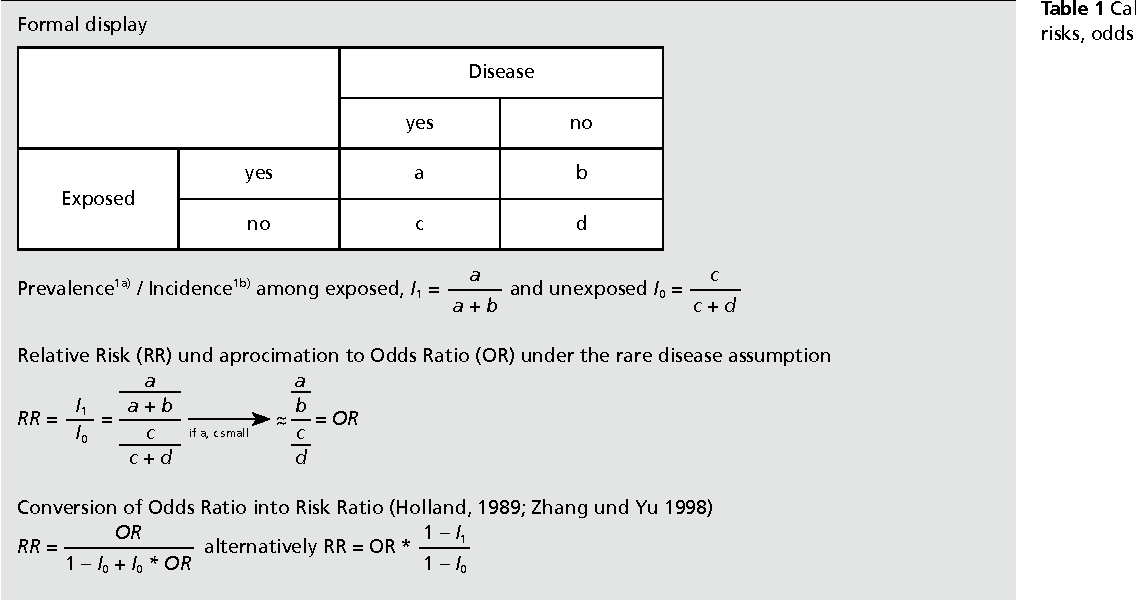



Pdf When To Use The Odds Ratio Or The Relative Risk Semantic Scholar




Measures Of Effect Relative Risks Odds Ratios Risk




Calculate Relative Risk With 95 Confidence Intervals
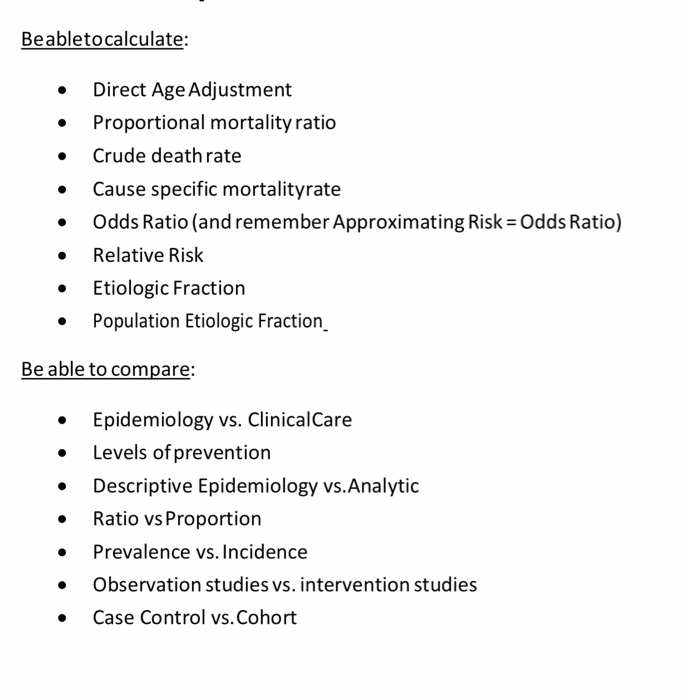



Beabletocalculate Direct Age Adjustment Chegg Com




Effect Sizes Basicmedical Key
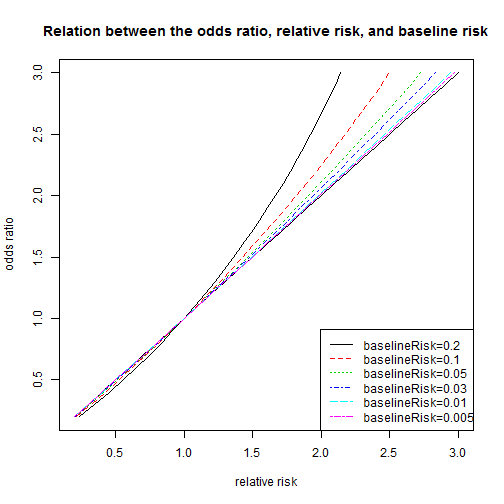



Relation Between The Odds Ratio Relative Risk And Baseline Risk




Questionable Utility Of The Relative Risk In Clinical Research A Call For Change To Practice Journal Of Clinical Epidemiology
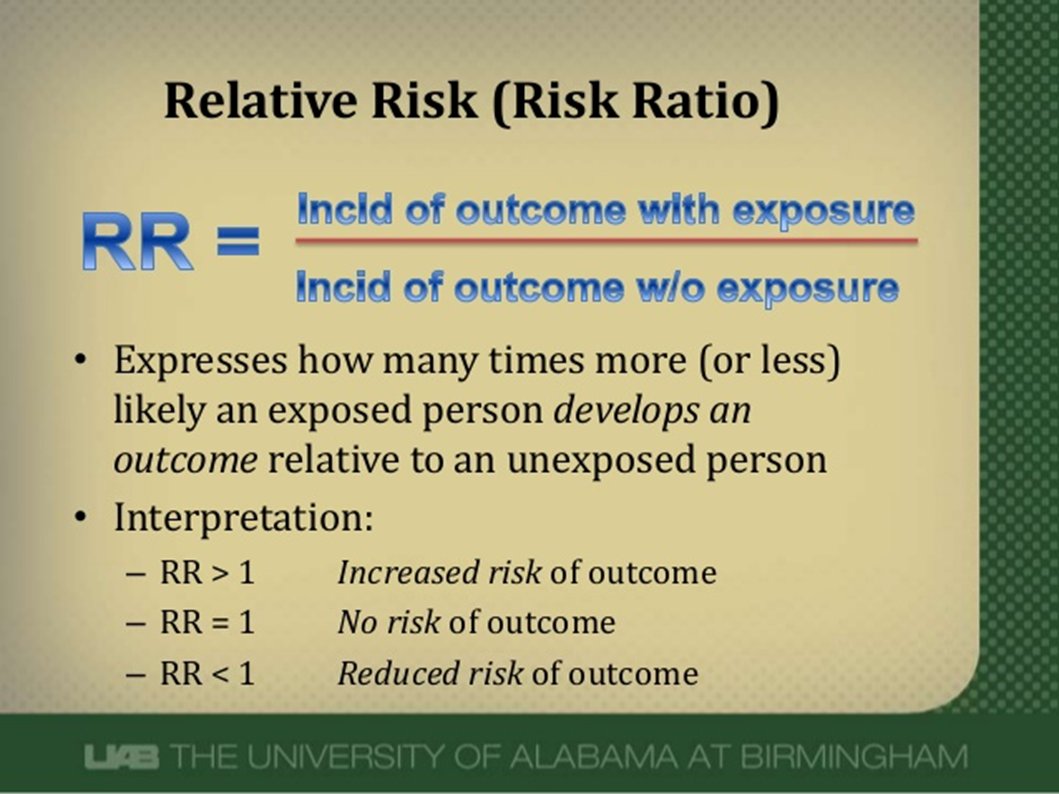



Abdullah Kharbosh What Does An Odds Ratio Or Relative Risk Mean By Ebmteacher Casecontrol Cohort T Co Shfiaepl57 عبر Slideshare
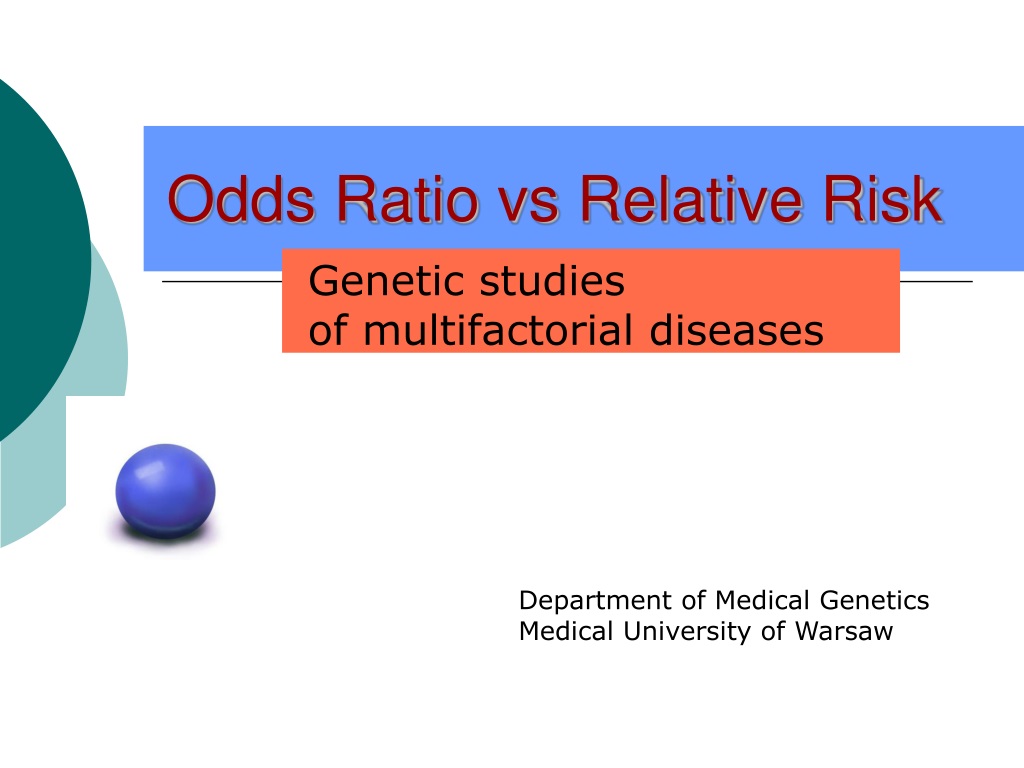



Ppt Odds Ratio Vs Relative Risk Powerpoint Presentation Free Download Id




Odds Ratios Vs Risk Ratios Stats By Slough




Youll Need To Know Prevalence Rate Odds Ratio Chegg Com



Relative Risk Vs Odds Ratio Authorstream



Attributable




What Are Cross Tables Odds Ratio And The Relative Risk Gcp Service




Calculation Of Odds Ratios Or And Relative Risk Rr Derived From Download Scientific Diagram




First Aid Epidemiology Biostatistics Flashcards Quizlet




On Biostatistics And Clinical Trials Odds Ratio And Relative Risk



Relative Risk And Odds Ratios Categorical Data And Chi Square Tests Biostatistics For The Health Sciences
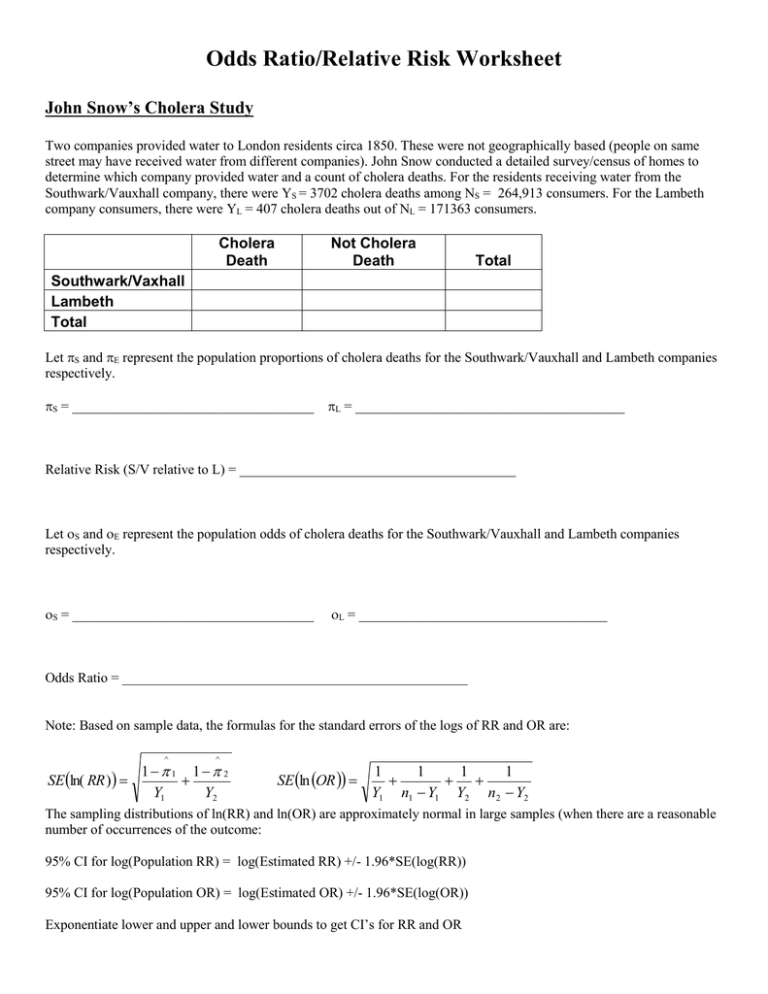



Odds Ratios And Relative Risks John Snow Cholera Data




Hsrp 734 Advanced Statistical Methods June 5 08
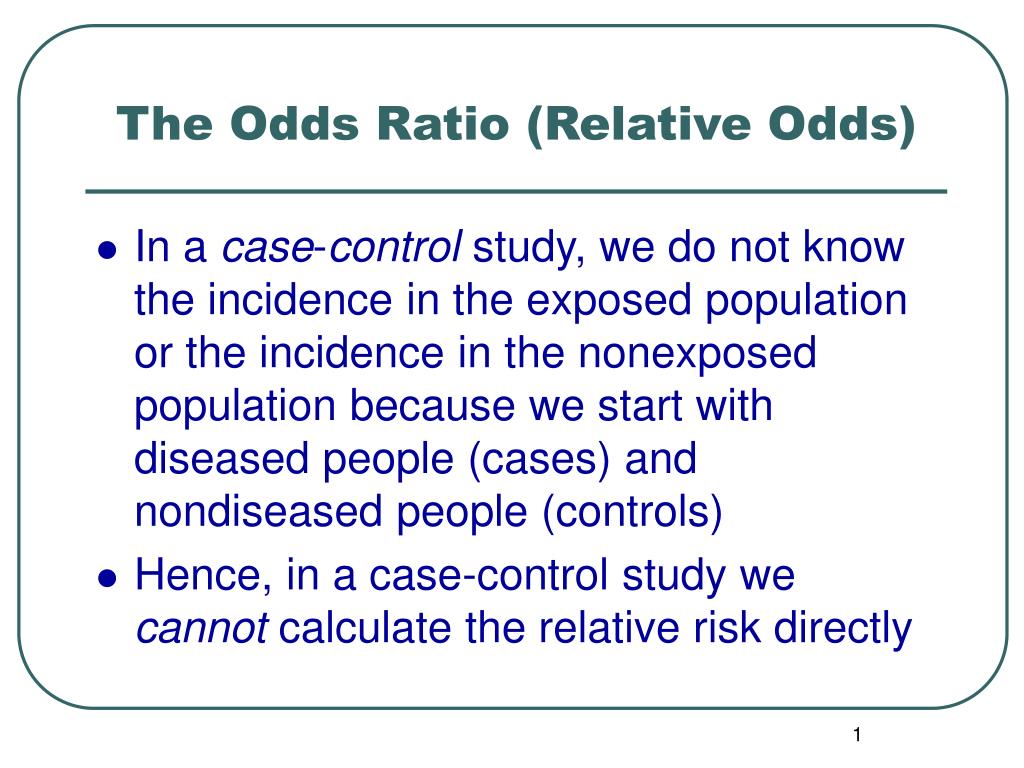



Ppt The Odds Ratio Relative Odds Powerpoint Presentation Free Download Id 6056




Understanding The Odds Ratio And The Relative Risk Simon 01 Journal Of Andrology Wiley Online Library
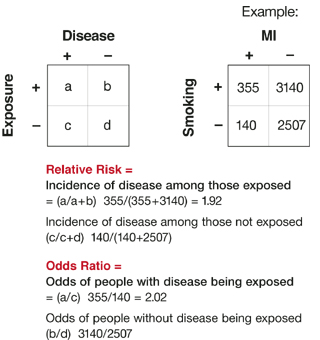



Relative Risks And Odds Ratios What S The Difference Mdedge Family Medicine




Odds Ratio Relative Risk Ppt Powerpoint Presentation Model Example Cpb Presentation Graphics Presentation Powerpoint Example Slide Templates



0 件のコメント:
コメントを投稿